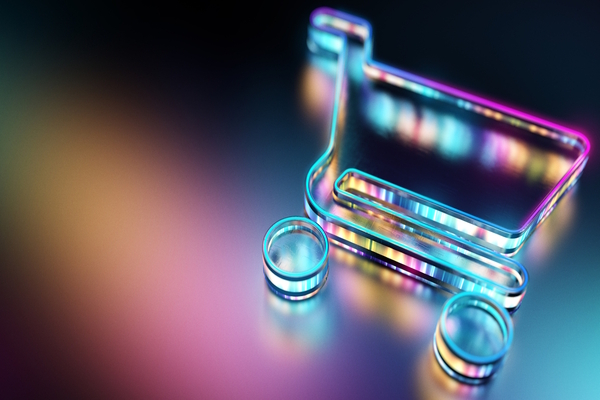Planning for supply chain disruption

William McNeill at e2open contends that effective supply chain leaders don’t wait for disruption – they plan ahead
Supply chains are built to withstand a degree of disruption. However, evolving environmental pressures, the ongoing aftershocks of the pandemic, and rising geo-political tensions have pushed supply chains to their breaking point.
For instance, escalating tensions in the Taiwan Strait could have a devastating effect on worldwide tech because Taiwan manufactures approximately 60% of the world’s semiconductors and up to 80% of advanced semiconductors. An invasion in the next few years could impact thousands of companies worldwide and affect billions of dollars in global trade.
Worries over semiconductor supply are even pushing countries like the US to rethink government security concerns to secure stock.
Monitoring for disruptive events and using risk dashboards is a great start, yet quick reactions are often just temporary fixes. So, how can leaders prepare for the disruptions that are so difficult to predict?
The answer is that they must put resilience at the heart of their supply chain strategies, weaving it in from network design and modeling through to sourcing and crisis response. A focus on mitigating risk and moving from a reactive to a proactive stance enables businesses to balance risk more effectively against cost and performance, recover quickly from the unexpected, and build stronger relationships with stakeholders.
Resilient supply chain professionals don’t wait for disruptions to happen and then decide what to do about it. Resilient supply chain professionals plan ahead.
Diversify and collaborate
First, to mitigate risk and work more proactively, businesses need to consider their supply base and how to sure up resiliency. Typically, many organisations turn to a multi-national approach – selecting multiple suppliers in multiple countries to reduce their exposure to any one risk event.
However, due to limited selection or concentration, not every company or industry has the luxury of spreading orders amongst multiple suppliers or geographies. Let’s consider supply chain resilience through the lens of semiconductor disruption for example.
The semiconductor industry is concentrated among a few companies and countries, and the production of a new fabrication facility can cost as much as $12 billion. If supplier diversification and the use of a multi-supplier strategy are not practical, organisations must employ alternative strategies to ensure a steady supply in the face of risk and disruption.
With semiconductor shortages, many chip customers created longer-term contracts for higher volumes with their suppliers. However, in other industries, businesses adopted alternate strategies to make their supply chain more resilient.
With contracts, organisations can look to buy-back contracts to entice new suppliers, or risk-sharing and revenue-sharing contracts to position themselves as customers of choice. Alternative measures include vendor-managed inventory (VMI) and collaborative forecasting and replenishment planning (CFRP) to sure up operations.
These strategies are all based on diversification and collaboration – essential to creating more resilient supply chains.
Shape demand through price and options
When faced with supply constraints, companies often use demand management strategies and tactics to spread out uncertain demand against fixed supply. For instance, some customers are willing to pay less for later delivery and take the risk that some of their orders will be unfulfilled.
Another tool is advanced commitment discounts, where customers are willing to pay less but commit their payment in advance. These methods help to boost customer retention and loyalty as they get a better price, especially important in tough economic times, and can cope with short delays.
Another way to ensure profitability and shift demand across time is through price postponement. This strategy involves setting prices after the orders have been placed and then setting the price based on demand. If demand is too high, the price can be set higher to drive down demand. This approach helps to ensure that all orders can be fulfilled and minimises delays, flexing prices to match stock levels.
Design and build products with flexibility in mind
Often flexibility and resiliency go hand in hand. Several flexible design principles help to mitigate risk and build resiliency in the supply chain. Using a platform design and postponing differentiation can offer product variety while reducing complexity, with different products sharing certain parts or components.
This can be a powerful tool to respond to supply constraints, especially when combined with other strategies such as dynamic pricing.
Access to real-time data across the supply chain also allows businesses to flex to demand. A more connected supply chain is a more resilient supply chain, with leaders able to make better-informed decisions across the board and effectively execute risk mitigation strategies.
Major events such as the Russo-Ukrainian war have exposed the degree to which modern supply chains have become interconnected. Disruptions have exposed supply and logistics bottlenecks and the tendency to rely too much on a limited number of providers.
Although supply chain leaders cannot predict every disruptive event, they can handle the unexpected with agility and resilience, building resilience into supply, demand, and product management strategies.
Diversification, collaboration, pricing strategies, and flexibility will all be crucial to ensure supply chain success.
William McNeill is Assistant Vice President at e2open
Main image courtesy of iStockPhoto.com

Business Reporter Team
Most Viewed
Winston House, 3rd Floor, Units 306-309, 2-4 Dollis Park, London, N3 1HF
23-29 Hendon Lane, London, N3 1RT
020 8349 4363
© 2025, Lyonsdown Limited. Business Reporter® is a registered trademark of Lyonsdown Ltd. VAT registration number: 830519543





